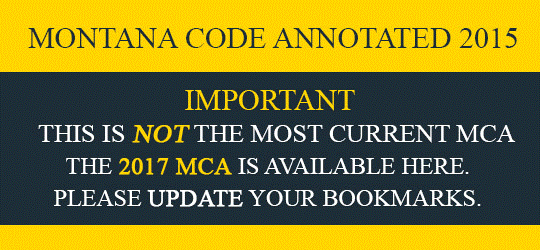



2-17-505. Policy. (1) It is the policy of the state that information technology be used to improve the quality of life of Montana citizens by providing educational opportunities, creating quality jobs and a favorable business climate, improving government, and protecting individual privacy and the privacy of the information contained within information technology systems.
(2) It is the policy of the state that the development of information technology resources in the state must be conducted in an organized, deliberative, and cost-effective manner.
(3) It is the policy of the state that information technology is essential and vital to the people of the state of Montana, and the services, systems, and infrastructure are therefore considered to be an asset of the state.
(4) The following principles must guide the development of state information technology resources:
(a) There are statewide information technology policies, standards, procedures, and guidelines applicable to all state agencies and other entities using the state network.
(b) Mitigation of risks is a priority in order to protect individual privacy and the privacy of information contained within information technology systems as they become more interconnected and as the liabilities stemming from the risk to information technology, also known as cyber risk, have increased.
(c) Whenever feasible and not an undue cyber risk, common data is entered once and shared among government entities at any level or political subdivision.
(d) Third-party providers of data, such as citizens, businesses, and other government entities, are responsible for the accuracy and integrity of the data provided to government entities.
(e) Government entities are required to conduct business through open, transparent processes to ensure accountability to the citizenry, and information technology provides access to information through simple and expeditious procedures.
(f) In order to minimize unwarranted duplication, similar information technology systems and data management applications are implemented and managed in a coordinated manner.
(g) Planning and development of information technology resources are conducted in conjunction with budget development and approval.
(h) Information technology systems are deployed aggressively whenever it can be shown that it will provide improved services to Montana citizens.
(i) Public-private partnerships are used to deploy information technology systems when practical and cost-effective.
(j) State information technology systems are developed in cooperation with the federal government and local governments with the objective of providing seamless access to information and services to the greatest degree possible.
(k) State information technology systems are able to accommodate electronic transmissions between the state and its citizens, businesses, and other government entities, including providing financial incentives for citizens and businesses to use electronic government services.
(l) State information technology systems are able to embrace the economics of digitized records to avoid duplication and transport costs.
(m) Electronic record creation, management, storage, and retrieval processes and procedures are used to create and deliver professional records management experiences for the citizens of Montana.
(n) State information technology systems are able to embrace continuous process improvement initiatives in order to keep pace with new and emerging technologies and delivery channels in order to allow citizens to determine when, where, and how they interact with government agencies.
(5) It is the policy of the state that the department must be accountable to the governor, the legislature, and the citizens of Montana.
History: En. Sec. 3, Ch. 313, L. 2001; amd. Sec. 1, Ch. 166, L. 2013.
